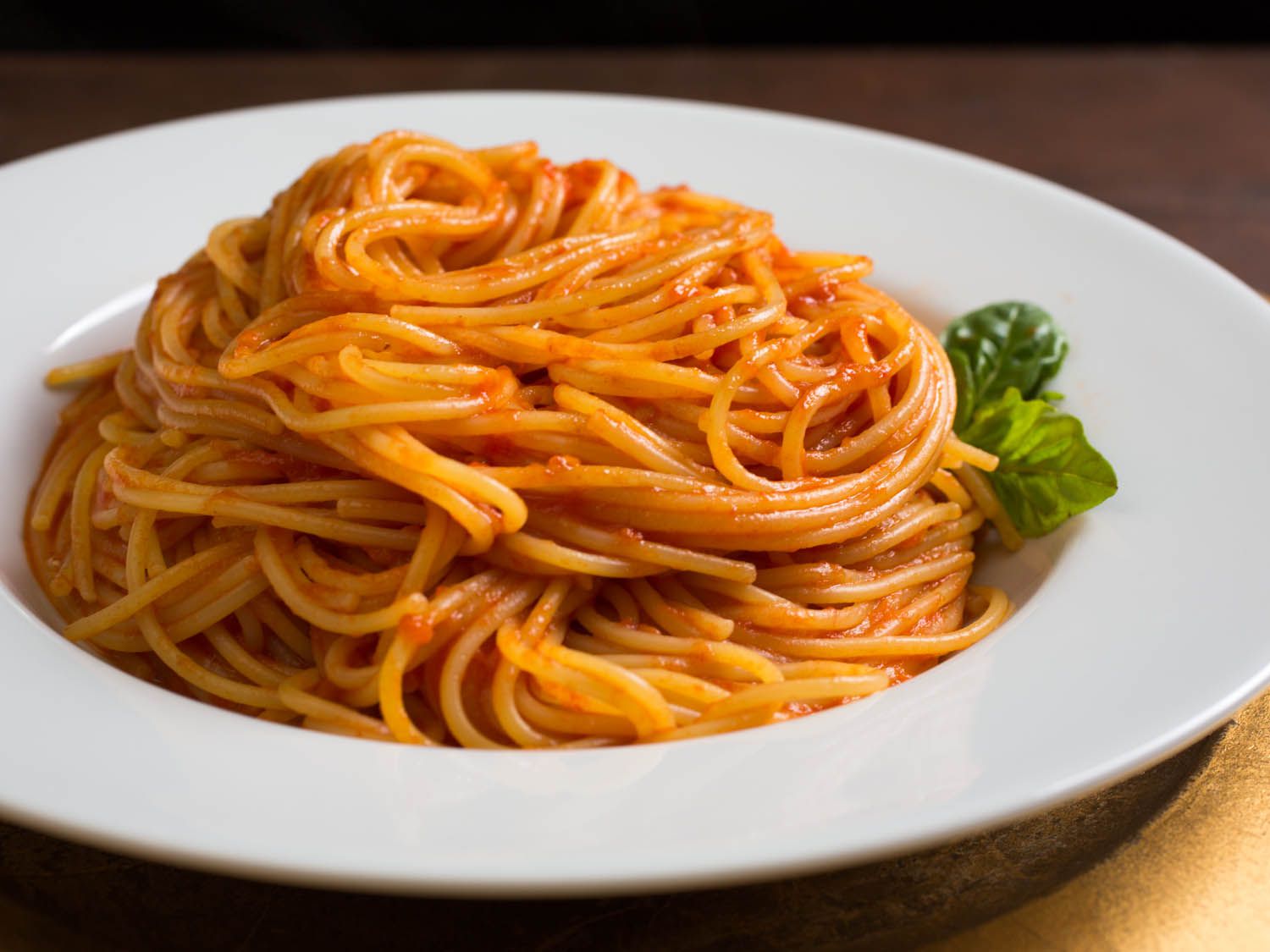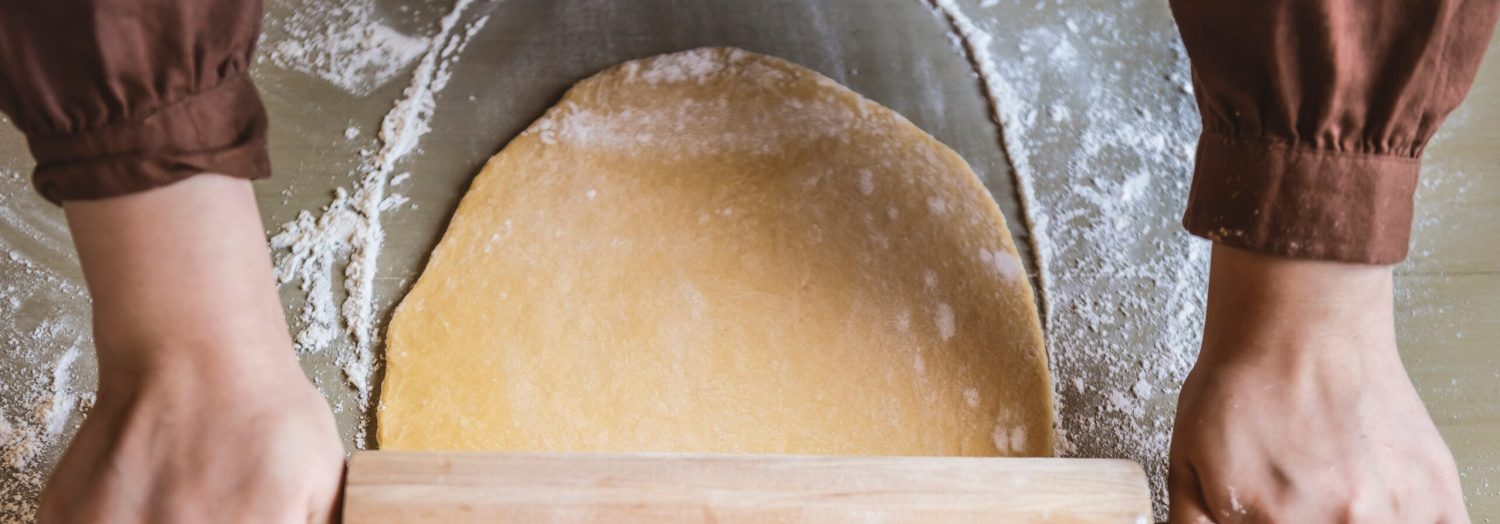Transform your pasta night with a homemade spaghetti sauce made from fresh tomatoes. This recipe brings out the natural sweetness and rich flavors of tomatoes, enhanced with aromatic herbs and spices. It's a simple yet delicious way to elevate your spaghetti to a whole new level.
While most of the ingredients for this recipe are common pantry staples, you may need to ensure you have fresh tomatoes on hand, as they are the star of the dish. Additionally, dried oregano and dried basil might not be in everyone's spice rack, so make sure to pick these up at the supermarket if you don't already have them.

Ingredients for Spaghetti Sauce with Fresh Tomatoes
Tomatoes: Fresh and ripe, these form the base of the sauce, providing natural sweetness and acidity.
Onion: Adds depth and a slight sweetness to the sauce when cooked.
Garlic: Infuses the sauce with a robust, aromatic flavor.
Olive oil: Used for sautéing the onion and garlic, adding a rich, fruity undertone.
Salt: Enhances all the flavors in the sauce.
Black pepper: Adds a mild heat and complexity.
Dried oregano: Brings a slightly bitter, earthy flavor that complements the tomatoes.
Dried basil: Adds a sweet, herbal note that pairs well with the tomatoes and oregano.
Sugar: Optional, but can be used to balance the acidity of the tomatoes if needed.
Technique Tip for This Recipe
When preparing this spaghetti sauce, consider using a food mill to process the fresh tomatoes. This will help remove the skins and seeds, resulting in a smoother sauce. Additionally, sauté the onion and garlic slowly to develop a deeper, sweeter flavor before adding the tomatoes. If you find the sauce too acidic, the pinch of sugar can balance it out, but you can also use a small amount of grated carrot for natural sweetness.
Suggested Side Dishes
Alternative Ingredients
chopped fresh tomatoes - Substitute with canned diced tomatoes: Canned diced tomatoes are a convenient alternative and provide a similar texture and flavor.
chopped fresh tomatoes - Substitute with tomato puree: Tomato puree offers a smoother consistency and a more concentrated tomato flavor.
diced onion - Substitute with shallots: Shallots have a milder and slightly sweeter flavor, making them a good substitute for onions.
diced onion - Substitute with leeks: Leeks provide a subtle onion flavor and can add a different texture to the sauce.
minced garlic - Substitute with garlic powder: Garlic powder can be used when fresh garlic is not available, though it has a slightly different flavor profile.
minced garlic - Substitute with shallots: Shallots can add a mild garlic-like flavor and a bit of sweetness.
olive oil - Substitute with canola oil: Canola oil is a neutral-flavored oil that can be used in place of olive oil for cooking.
olive oil - Substitute with grapeseed oil: Grapeseed oil has a high smoke point and a neutral flavor, making it a good alternative for sautéing.
salt - Substitute with soy sauce: Soy sauce can add saltiness along with a depth of umami flavor.
salt - Substitute with sea salt: Sea salt can be used as a direct substitute for regular salt, often with a slightly different mineral flavor.
black pepper - Substitute with white pepper: White pepper has a milder flavor and can be used to maintain the peppery taste without the black specks.
black pepper - Substitute with cayenne pepper: Cayenne pepper adds heat and a different kind of spiciness to the sauce.
dried oregano - Substitute with fresh oregano: Fresh oregano has a more vibrant flavor and can be used in place of dried oregano.
dried oregano - Substitute with dried thyme: Dried thyme offers a different but complementary herbal flavor.
dried basil - Substitute with fresh basil: Fresh basil provides a more intense and aromatic flavor compared to dried basil.
dried basil - Substitute with dried parsley: Dried parsley can be used for a milder herbal note.
optional sugar - Substitute with honey: Honey adds sweetness along with a slight floral note.
optional sugar - Substitute with maple syrup: Maple syrup provides sweetness with a unique flavor twist.
Other Alternative Recipes
How To Store / Freeze Your Sauce
Allow the spaghetti sauce to cool completely at room temperature before storing. This prevents condensation from forming inside the storage container, which can dilute the sauce.
Transfer the cooled sauce into airtight containers or heavy-duty freezer bags. If using containers, leave about an inch of space at the top to allow for expansion when freezing.
Label each container or bag with the date and contents. This helps you keep track of how long the sauce has been stored and ensures you use the oldest sauce first.
For short-term storage, place the containers in the refrigerator. The spaghetti sauce will keep well for up to 5 days.
For long-term storage, place the containers or bags in the freezer. The sauce can be frozen for up to 3 months without losing its flavor and quality.
When ready to use, thaw the sauce in the refrigerator overnight. If you're in a hurry, you can also thaw it in a microwave using the defrost setting.
Reheat the sauce in a saucepan over medium heat, stirring occasionally until it reaches the desired temperature. If the sauce appears too thick after reheating, you can add a splash of water or vegetable broth to achieve the desired consistency.
If you prefer portion control, consider freezing the sauce in ice cube trays. Once frozen, transfer the sauce cubes to a freezer bag. This allows you to thaw only the amount you need.
For an added burst of flavor, you can stir in fresh herbs like basil or parsley just before serving. This will give the sauce a fresh, vibrant taste even after being stored.
Always ensure that the sauce is reheated to a safe temperature of 165°F (74°C) to kill any potential bacteria, especially if it has been stored for an extended period.
How To Reheat Leftovers
Stovetop Method: Place the spaghetti sauce in a saucepan over medium heat. Stir occasionally to ensure even heating. If the sauce thickens too much, add a splash of water or vegetable broth to reach your desired consistency. Heat until the sauce is steaming and hot throughout, about 10-15 minutes.
Microwave Method: Transfer the spaghetti sauce to a microwave-safe container. Cover with a microwave-safe lid or plastic wrap, leaving a small vent for steam to escape. Heat on high in 1-minute intervals, stirring in between, until the sauce is hot and evenly heated. This usually takes about 3-5 minutes depending on the amount of sauce.
Oven Method: Preheat your oven to 350°F (175°C). Place the spaghetti sauce in an oven-safe dish and cover with aluminum foil. Bake for about 20-30 minutes, stirring halfway through, until the sauce is hot and bubbly.
Slow Cooker Method: Pour the spaghetti sauce into a slow cooker. Set it to low and heat for 1-2 hours, stirring occasionally. This method is great if you want to keep the sauce warm for an extended period without worrying about it burning.
Double Boiler Method: Fill a large pot with a few inches of water and bring it to a simmer. Place a heatproof bowl with the spaghetti sauce over the simmering water, ensuring the bottom of the bowl does not touch the water. Stir occasionally until the sauce is heated through, which should take about 15-20 minutes. This gentle method helps prevent scorching.
Sous Vide Method: Place the spaghetti sauce in a vacuum-sealed bag or a ziplock bag using the water displacement method. Set your sous vide machine to 140°F (60°C) and immerse the bag in the water bath. Heat for about 30-45 minutes. This method ensures even heating and preserves the sauce's flavor and texture.
Best Tools for This Recipe
Large pot: Used for cooking the sauce and allowing it to simmer evenly.
Wooden spoon: Ideal for stirring the sauce without scratching the pot.
Chef's knife: Essential for chopping the fresh tomatoes and dicing the onion.
Cutting board: Provides a stable surface for chopping and dicing ingredients.
Garlic press: Useful for mincing the garlic cloves quickly and efficiently.
Measuring spoons: Necessary for accurately measuring the salt, pepper, oregano, and basil.
Ladle: Handy for serving the sauce over cooked spaghetti.
Colander: Used to drain the cooked spaghetti before serving with the sauce.
How to Save Time on This Recipe
Use a food processor: Chop the tomatoes and onion quickly using a food processor to save prep time.
Pre-minced garlic: Opt for pre-minced garlic to cut down on chopping time.
Simmer with a lid: Cover the pot while simmering to reduce cooking time and keep the sauce from splattering.
Batch cooking: Make a large batch of spaghetti sauce and freeze portions for future meals.
Quick-cook pasta: Use quick-cook spaghetti to reduce overall meal preparation time.

Spaghetti Sauce with Fresh Tomatoes
Ingredients
Main Ingredients
- 2 lbs Fresh Tomatoes chopped
- 1 medium Onion diced
- 4 cloves Garlic minced
- 2 tablespoon Olive Oil
- 1 teaspoon Salt
- 1 teaspoon Black Pepper
- 1 teaspoon Dried Oregano
- 1 teaspoon Dried Basil
- 1 pinch Sugar optional
Instructions
- Heat olive oil in a large pot over medium heat.
- Add diced onion and cook until translucent, about 5 minutes.
- Add minced garlic and cook for another 2 minutes.
- Add chopped tomatoes, salt, pepper, oregano, and basil. Stir well.
- Bring to a simmer and cook for 45 minutes, stirring occasionally.
- Taste and adjust seasoning. Add a pinch of sugar if the sauce is too acidic.
- Serve hot over cooked spaghetti.
Nutritional Value
Keywords
Suggested Appetizers and Desserts
More Amazing Recipes to Try 🙂
- Strawberry Cake Recipe50 Minutes
- Roasted Pork Chops Recipe30 Minutes
- Vietnamese Iced Coffee Recipe10 Minutes
- Ricotta Cheese Recipe40 Minutes
- Fried Rice with Ham Recipe25 Minutes
- Breakfast Sausage Recipe25 Minutes
- Beef Stir Fry Recipe25 Minutes
- Feijoada Brazilian Black Bean Stew Recipe2 Hours 30 Minutes


Leave a Reply